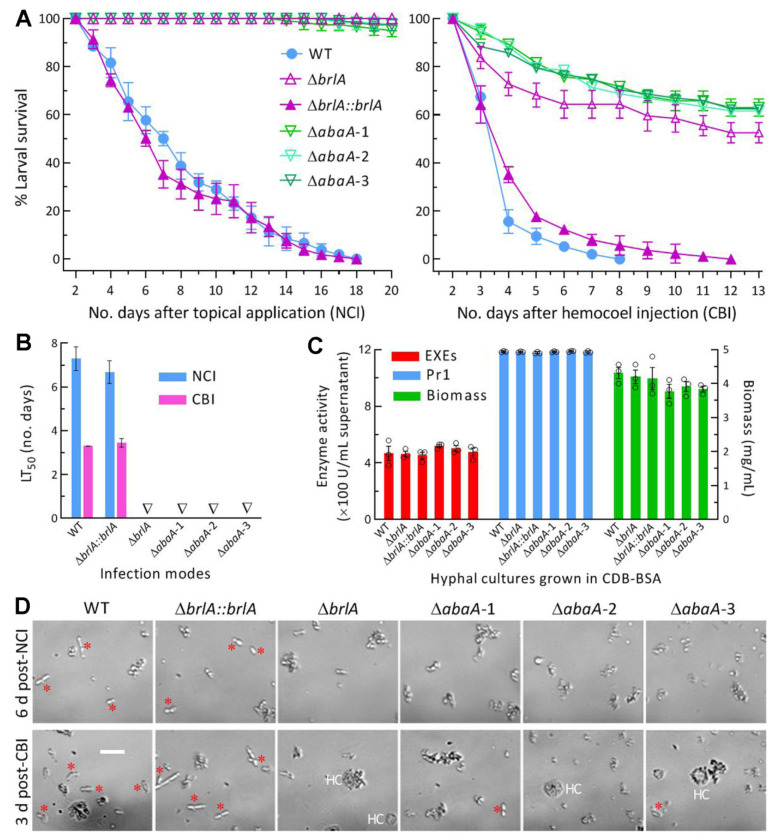Figure 4.
Indispensability of brlA or AbaA for insect-pathogenic lifecycle of M. robertsii. (A) Survival trends of G. mellonella larvaeafter immersion in a fresh hyphal 100 mg/mL suspension for normal cuticle infection (NCI) and intrahemocoel injection of 5 μL fresh hyphal (10 mg/mL) suspension per larva for cuticle-bypassing infection (CBI). (B) LT50 values estimated from time-mortality trends. Triangles indicate an LT50 not accessible for ΔbrlA and ΔabaA mutants. (C) Total activities of cuticle degrading enzymes (ECEs and Pr1 proteases) and biomass levels assessed from the 3-day-old submerged cultures generated by shaking incubation of a fresh hyphal 1 mg/mL suspension in CDB-BSA. (D) Microscopic images (scale bar: 20 μm) for status and abundance of fungal budding cells (marked with red stars) and insect hemocytes (HC) in hemolymph samples, which were taken from surviving larvae 6 days post-NCI and 3 days post-CBI and incubated at 25 °C for 36 h in SDBY. Error bars: SDs from three independent replicates.

